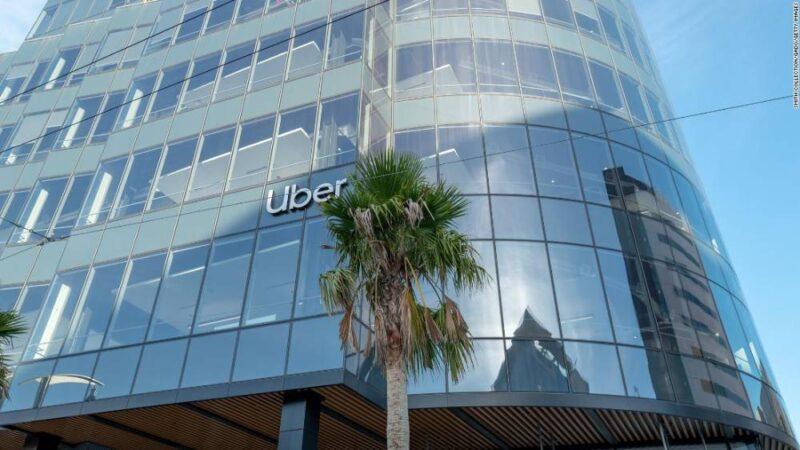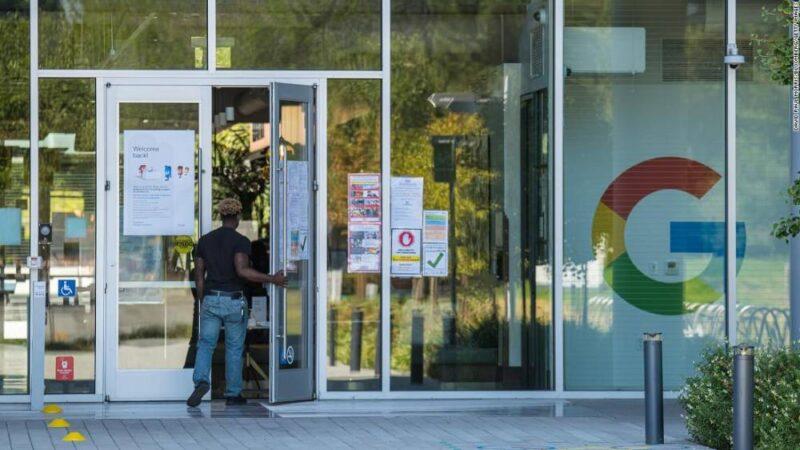San Francisco (CNN Business)After four months of working from home during the pandemic, Reeba Akram decided to change where home was.
Akram, who works for Google, moved with her husband and two young children from Los Altos — a 15-minute drive from the company’s Silicon Valley headquarters — to Dallas, Texas. The biggest reason for the move, she said, was cost of living.”We were paying three times the mortgage of our house that we have here in Texas, but we had one-third of the space,” she said. Her choice of where to live is now “the question of the year,” she says, with Google’s September deadline approaching for employees to decide between moving offices, coming back or staying remote.Akram is part of a sizable tech exodus from the San Francisco Bay Area, with the tech hub’s biggest companies, including Twitter, Facebook, Google and Apple, among the first to shift to remote work last year during the pandemic. Some employees have moved to totally different corners of the country, while others — the vast majority — have simply moved elsewhere in the state or to suburbs a few hours away.

No 'mass exodus' in California during the pandemic, study findsSome of those relocations are more permanent than others, as companies and workers start to reckon with the kind of offices they want after more than a year of working from home. The tech industry and its biggest companies are emerging as pacesetters on that front, having pioneered several aspects of modern office culture for years before setting the tone for a shift to remote work when the pandemic began.Read MoreBut the tech talent that Silicon Valley companies compete for has spread out across the country over the past year, and the pandemic has laid bare how much of their jobs can in fact be done remotely. With more than half of US adults fully vaccinated and a broader reopening on the horizon, many of those companies are figuring out how much remote work they’ll continue to allow, and employees are thinking harder about how much they want. The result could have a big impact on Silicon Valley companies that spent billions on campuses and perks to keep workers at work as long as possible, and also on other big cities who are vying to attract talent away from the heartland of the tech industry.
Pros and cons
Just as the tech industry led the way in transitioning to remote work, its top companies are providing early templates for bringing workers back to the office (or not).”Our [employees] actually have very different perceptions about working from home — some find it easier to separate work life if they’re in the office, some people actually find it easier to juggle if it’s at home,” Nikki Krishnamurthy, Uber’s chief people officer, told CNN Business in an interview. “I don’t think we would have had those insights if it hadn’t been for the pandemic.”Uber started bringing workers back to its brand-new headquarters, in San Francisco’s Mission Bay, for the first time in late March — a highly publicized office move years in the making that was further delayed by the pandemic. It’s given them until September to return to their pre-pandemic locations, after which they’ll be required to be in the office at least three days a week. Krishnamurthy says the company chose that path after considering options to balance productivity, engagement, teamwork and flexibility, while also retaining its fast-moving culture. A survey of Uber employees in September last year showed 75% would prefer a hybrid model where they came into the office a few days a week.”You might optimize more for flexibility, a little bit broader reach for talent anywhere, but will you give up your magic?” she said. “And we just didn’t want to give up our magic.”

Uber’s internal surveys showed 75% of employees prefer a hybrid model, where they come in a few days a week.Facebook says employees will generally be asked to return to their current office, though they can transfer to roles based in another location. “There is also an option for employees in eligible roles to apply for long-term remote work,” the company added in a statement. “We don’t see vibrant offices and healthy remote work as a tradeoff — we believe these can co-exist and be unified by one cohesive employee experience.”Twitter has told employees they can work remotely “forever” if they so choose and their role allows it. Apple, which reportedly began bringing workers back as early as May last year, did not respond to requests for comment.Google workers around the world will continue working remotely until September, after which they can choose between coming back to their pre-pandemic office, working out of a Google office in a different city or permanently working from anywhere if their role allows it, CEO Sundar Pichai said in a note to employees earlier this month. Pichai said he expects 60% of the company’s global workforce will return to their pre-pandemic offices a few days a week, while 20% will move to a different office and the remaining 20% will work from home. It’s a slight departure from Google’s previous plan in which all employees would have come into the office three days a week — similar to Uber’s.

Silicon Valley is starting to bring workers back to the officeThe tech industry might seem well-positioned for remote work indefinitely but it has also spent years building a culture of collaboration and innovation that it will be loath to give up, spending untold billions on huge offices and perks like free food, gyms and nap pods that convince employees to spend more time there than they do at home.Nicholas Bloom, an economics professor at Stanford University whose research has extensively focused on remote work, says a hybrid model like the one Uber is adopting will likely to become more of a norm. “It is hard to come up with new ideas and products working fully remote,” he said. “Post pandemic that will not change as [tech] employees tend to work well when at least part of the week they are together.”
Battle of the tech hubs
It isn’t just employees making big moves. Earlier in the pandemic, there was a minor exodus of tech firms and executives from the Bay Area to other cities — with Florida and Texas emerging as particularly popular destinations. Hewlett Packard Enterprise (HPE), a descendant of the company credited with starting Silicon Valley, announced in December that it would move its headquarters to Houston. Oracle, another longtime Bay Area powerhouse, announced a move to Austin later that month. High profile individuals from the region, including Tesla (TSLA) CEO Elon Musk, Dropbox (DBX) CEO Drew Houston and renowned Silicon Valley investor Jim Breyer have all moved to the Texan capital in recent months. In an op-ed for CNN Business hailing Austin as an emerging tech destination, Breyer cited the city’s “culture of interdisciplinary collaboration” as well as its “comparative affordability, outdoor culture and professional development opportunities.” Miami mayor Francis Suarez has spent months courting tech entrepreneurs and investors, with some success. Founders Fund, the venture capital firm co-founded by Peter Thiel, reportedly opened a big new office in the city, while Shutterstock founder Jon Oringer also moved there and started a firm aimed at incubating and investing in startups in the Miami tech scene.

Google invested billions in new office space even during the pandemic, and CEO Sundar Pichai expects 60% of employees will return to their pre-pandemic offices.But there are indications the exodus from Silicon Valley may be somewhat exaggerated. Google committed more than $1 billion earlier this year to expanding its California offices, while Apple has reportedly leased six new buildings in the Bay Area city of Sunnyvale that can accommodate up to 3,000 employees. A report in March by investment firm Telstra Ventures said 96.9% of startups stayed in the Bay Area, and VC investments increased 4% from 2019. “The Bay Area will continue to be the epicenter of tech for years to come,” Mark Sherman, general partner at Telstra Ventures, wrote in the report.
Decisions to make
It’s also unclear how decisions made during the worst of the pandemic might stick as the economy and people’s lives reopen.Jasmine Shah moved to Los Angeles, where she grew up, last October. Before the pandemic, Shah, who works for the software company VMWare, would drive from her home in San Francisco to the firm’s offices in Palo Alto, a commute she described as “very hard.””The pandemic has blasted this whole idea that you have to be in the place you are,” she said. Still, Shah says her exit from Silicon Valley has always felt temporary — a lot of her stuff is still in storage in San Francisco. Ultimately, she says, if you want to work in tech then the Bay Area is where the best career opportunities are. It largely remains tech’s biggest power center and the big guns such as Google, Facebook and Apple still have their massive headquarters there. But she’s unsure about living there long term because of how prohibitively expensive it is. “Honestly, I don’t know,” she says. “I’m looking to change a lot of things.”

Google doubles down on office space despite the rise in remote workThere are also signs the region is already starting to bounce back. A report last month by real estate firm CBRE said rents in major US tech hubs, including San Francisco, San Jose, Cupertino (home to Apple) and Mountain View (home to Google) appear to have bottomed out and have started rising again this year.And given how much the pandemic has accelerated our dependence on technology, major tech firms are likely to be laying the groundwork for a spurt of further growth, Colin Yasukochi, director of CBRE’s Tech Insights Center, told CNN Business.

Facebook says it doesn’t see “see vibrant offices and healthy remote work as a tradeoff.” Krishnamurthy said Uber considered all possible options before settling on its three-days-a-week approach, but fears a downside to Silicon Valley companies — particularly smaller startups — that decide to go fully remote.”I worry that at some point that they will lose productivity because they haven’t built those relationships,” she said. “If you start that way, it’s really hard to change culture … and I just wonder if the pandemic and these behaviors that have hardened will cause people to think they can do it all remote and then still wind up hitting that brick wall.”With her deadline to decide approaching, Akram has a long-running pros and cons list. Google’s new policy adds more reasons for her to move back to California, she says. If she can stay in a more affordable area, she’s willing to drive a little farther to get to the office a few days a week.
“I was definitely really happy to see that they were listening to what the demand was out there and that they were open to changing things,” she said.
Source: edition.cnn.com

